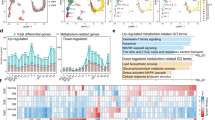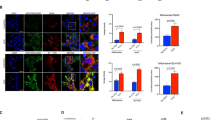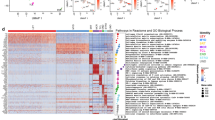Abstract
Age-related changes in testicular function can impact health and well-being. The mechanisms underlying age-related testicular dysfunction, such as late-onset hypogonadism (LOH), remain incompletely understood. Using single-cell RNA sequencing on human testes with LOH, we delineated Sertoli cells (SCs) as pivotal metabolic coordinators within the testicular microenvironment. In particular, lysosomal acidity probing revealed compromised degradative capacity in aged SCs, hindering autophagy and phagocytic flux. Consequently, SCs accumulated metabolites, including cholesterol, and have increased inflammatory gene expression; thus, we termed these cells as phago-/auto-lysosomal deregulated SCs. Exposure to a high-fat diet-induced phago-/auto-lysosomal dysregulated-like SCs, recapitulating LOH features in mice. Notably, efferent ductular injection and systemic TRPML1 agonist administration restored lysosomal function, normalizing testosterone deficiency and associated abnormalities in high-fat diet-induced LOH mice. Our findings underscore the central role of SCs in testis aging, presenting a promising therapeutic avenue for LOH.
This is a preview of subscription content, access via your institution
Access options
Access Nature and 54 other Nature Portfolio journals
Get Nature+, our best-value online-access subscription
$29.99 / 30 days
cancel any time
Subscribe to this journal
Receive 12 digital issues and online access to articles
$119.00 per year
only $9.92 per issue
Buy this article
- Purchase on Springer Link
- Instant access to full article PDF
Prices may be subject to local taxes which are calculated during checkout







Similar content being viewed by others
Data availability
scRNA-seq data of this study can be found in the NCBI under accession numbers GSE149512 and GSE215754. Bulk RNA-seq data used in this study is available in the NCBI under accession number GSE218384. Source data are provided with this paper.
Code availability
All code associated with this paper and the gene annotation list have been uploaded to GitHub (https://github.com/zlyingithub/human-testis-aging-atlas)55.
References
Wu, F. C. et al. Identification of late-onset hypogonadism in middle-aged and elderly men. N. Engl. J. Med. 363, 123–135 (2010).
Wang, C. et al. Investigation, treatment and monitoring of late-onset hypogonadism in males: ISA, ISSAM, EAU, EAA and ASA recommendations. Eur. J. Endocrinol. 159, 507–514 (2008).
Nie, X. et al. Single-cell analysis of human testis aging and correlation with elevated body mass index. Dev. Cell 57, 1160–1176 (2022).
Franca, L. R., Hess, R. A., Dufour, J. M., Hofmann, M. C. & Griswold, M. D. The Sertoli cell: one hundred fifty years of beauty and plasticity. Andrology 4, 189–212 (2016).
Mruk, D. D. & Cheng, C. Y. Sertoli–Sertoli and Sertoli–germ cell interactions and their significance in germ cell movement in the seminiferous epithelium during spermatogenesis. Endocr. Rev. 25, 747–806 (2004).
Rebourcet, D. et al. Sertoli cells control peritubular myoid cell fate and support adult Leydig cell development in the prepubertal testis. Development 141, 2139–2149 (2014).
Rato, L. et al. Metabolic regulation is important for spermatogenesis. Nat. Rev. Urol. 9, 330–338 (2012).
Robertson, K. M. et al. The liver X receptor-beta is essential for maintaining cholesterol homeostasis in the testis. Endocrinology 146, 2519–2530 (2005).
Traish, A. M., Saad, F. & Guay, A. The dark side of testosterone deficiency: II. Type 2 diabetes and insulin resistance. J. Androl. 30, 23–32 (2009).
Traish, A. M., Saad, F., Feeley, R. J. & Guay, A. The dark side of testosterone deficiency: III. Cardiovascular disease. J. Androl. 30, 477–494 (2009).
Khaw, K. T. et al. Endogenous testosterone and mortality due to all causes, cardiovascular disease, and cancer in men: European prospective investigation into cancer in Norfolk (EPIC-Norfolk) Prospective Population Study. Circulation 116, 2694–2701 (2007).
Khera, M. et al. Adult-onset hypogonadism. Mayo Clin. Proc. 91, 908–926 (2016).
Corona, G., Vignozzi, L., Sforza, A., Mannucci, E. & Maggi, M. Obesity and late-onset hypogonadism. Mol. Cell. Endocrinol. 418, 120–133 (2015).
Rhoden, E. L. & Morgentaler, A. Risks of testosterone-replacement therapy and recommendations for monitoring. N. Engl. J. Med. 350, 482–492 (2004).
Corona, G., Vignozzi, L., Sforza, A. & Maggi, M. Risks and benefits of late onset hypogonadism treatment: an expert opinion. World J. Mens Health 31, 103–125 (2013).
Papadopoulos, V., Kamtchouing, P., Drosdowsky, M. A., Hochereau de Reviers, M. T. & Carreau, S. Adult rat Sertoli cells secrete a factor or factors which modulate Leydig cell function. J. Endocrinol. 114, 459–467 (1987).
Yoshida, K. & Oshima, H. The regulation of testicular function by paracrine mechanism. Nihon Naibunpi Gakkai Zasshi 70, 1047–1054 (1994).
Glass, C. K. & Olefsky, J. M. Inflammation and lipid signaling in the etiology of insulin resistance. Cell Metab. 15, 635–645 (2012).
Krahmer, N., Farese, R. V.Jr & Walther, T. C. Balancing the fat: lipid droplets and human disease. EMBO Mol. Med. 5, 973–983 (2013).
Romao, S. & Munz, C. LC3-associated phagocytosis. Autophagy 10, 526–528 (2014).
Yang, C. et al. miR-202-3p regulates Sertoli cell proliferation, synthesis function, and apoptosis by targeting LRP6 and cyclin D1 of Wnt/beta-catenin signaling. Mol. Ther. Nucleic Acids 14, 1–19 (2019).
Abu-Remaileh, M. et al. Lysosomal metabolomics reveals V-ATPase- and mTOR-dependent regulation of amino acid efflux from lysosomes. Science 358, 807–813 (2017).
Liu, C. et al. Autophagy is required for ectoplasmic specialization assembly in Sertoli cells. Autophagy 12, 814–832 (2016).
Aman, Y. et al. Autophagy in healthy aging and disease. Nat. Aging 1, 634–650 (2021).
Lee, J. H. et al. Faulty autolysosome acidification in Alzheimer’s disease mouse models induces autophagic build-up of Abeta in neurons, yielding senile plaques. Nat. Neurosci. 25, 688–701 (2022).
Kimura, S., Noda, T. & Yoshimori, T. Dissection of the autophagosome maturation process by a novel reporter protein, tandem fluorescent-tagged LC3. Autophagy 3, 452–460 (2007).
Inomata, M. et al. Macrophage LC3-associated phagocytosis is an immune defense against Streptococcus pneumoniae that diminishes with host aging. Proc. Natl Acad. Sci. USA 117, 33561–33569 (2020).
Zhao, W., Su, J., Wang, Y., Qian, T. & Liu, Y. Functional importance of palmitoyl protein thioesterase 1 (PPT1) expression by Sertoli cells in mediating cholesterol metabolism and maintenance of sperm quality. Mol. Reprod. Dev. 86, 984–998 (2019).
Nakanishi, Y. & Shiratsuchi, A. Phagocytic removal of apoptotic spermatogenic cells by Sertoli cells: mechanisms and consequences. Biol. Pharm. Bull. 27, 13–16 (2004).
Marschallinger, J. et al. Lipid-droplet-accumulating microglia represent a dysfunctional and proinflammatory state in the aging brain. Nat. Neurosci. 23, 194–208 (2020).
Zeng, J. et al. Restoration of lysosomal acidification rescues autophagy and metabolic dysfunction in non-alcoholic fatty liver disease. Nat. Commun. 14, 2573 (2023).
Yoshimori, T., Yamamoto, A., Moriyama, Y., Futai, M. & Tashiro, Y. Bafilomycin A1, a specific inhibitor of vacuolar-type H+-ATPase, inhibits acidification and protein degradation in lysosomes of cultured cells. J. Biol. Chem. 266, 17707–17712 (1991).
Zhang, S. X. et al. Hypothalamic dopamine neurons motivate mating through persistent cAMP signalling. Nature 597, 245–249 (2021).
Yu, L. et al. Small-molecule activation of lysosomal TRP channels ameliorates Duchenne muscular dystrophy in mouse models. Sci. Adv. 6, eaaz2736 (2020).
Busada, J. T., Niedenberger, B. A., Velte, E. K., Keiper, B. D. & Geyer, C. B. Mammalian target of rapamycin complex 1 (mTORC1) Is required for mouse spermatogonial differentiation in vivo. Dev. Biol. 407, 90–102 (2015).
Vander Haar, E., Lee, S. I., Bandhakavi, S., Griffin, T. J. & Kim, D. H. Insulin signalling to mTOR mediated by the Akt/PKB substrate PRAS40. Nat. Cell Biol. 9, 316–323 (2007).
Wang, H. & Eckel, R. H. Lipoprotein lipase: from gene to obesity. Am. J. Physiol. Endocrinol. Metab. 297, E271–E288 (2009).
Selva, D. M. et al. The ATP-binding cassette transporter 1 mediates lipid efflux from Sertoli cells and influences male fertility. J. Lipid Res. 45, 1040–1050 (2004).
Jeon, H. & Blacklow, S. C. Structure and physiologic function of the low-density lipoprotein receptor. Annu. Rev. Biochem. 74, 535–562 (2005).
Roberts, M. A. & Olzmann, J. A. Protein quality control and lipid droplet metabolism. Annu. Rev. Cell Dev. Biol. 36, 115–139 (2020).
Schultz, J. R. et al. Role of LXRs in control of lipogenesis. Genes Dev. 14, 2831–2838 (2000).
Sebo, Z. L. & Rodeheffer, M. S. Testosterone metabolites differentially regulate obesogenesis and fat distribution. Mol. Metab. 44, 101141 (2021).
Ioannou, M. S. et al. Neuron–astrocyte metabolic coupling protects against activity-induced fatty acid toxicity. Cell 177, 1522–1535 (2019).
Olzmann, J. A. & Carvalho, P. Dynamics and functions of lipid droplets. Nat. Rev. Mol. Cell Biol. 20, 137–155 (2019).
Jesus, T. T. et al. Mammalian target of rapamycin controls glucose consumption and redox balance in human Sertoli cells. Fertil. Steril. 105, 825–833 (2016).
Somogyi, A. et al. The synthetic TRPML1 agonist ML-SA1 rescues Alzheimer-related alterations of the endosomal-autophagic-lysosomal system. J. Cell Sci. 136, jcs259875 (2023).
Zhang, M. et al. Transplanted human p75-positive stem Leydig cells replace disrupted Leydig cells for testosterone production. Cell Death Dis. 8, e3123 (2017).
Zhao, L. et al. Single-cell analysis of developing and azoospermia human testicles reveals central role of Sertoli cells. Nat. Commun. 11, 5683 (2020).
Arato, I. et al. In vitro’ effect of different follicle-stimulating hormone preparations on Sertoli cells: toward a personalized treatment for male infertility. Front. Endocrinol. 11, 401 (2020).
Jin, S. et al. Inference and analysis of cell–cell communication using CellChat. Nat. Commun. 12, 1088 (2021).
Handelsman, D. J. et al. Measurement of testosterone by immunoassays and mass spectrometry in mouse serum, testicular, and ovarian extracts. Endocrinology 156, 400–405 (2015).
Sun, Y. et al. Lysosome activity is modulated by multiple longevity pathways and is important for lifespan extension in C. elegans. Elife 9, e55745 (2020).
Geng, J. et al. DRAM1 plays a tumor suppressor role in NSCLC cells by promoting lysosomal degradation of EGFR. Cell Death Dis. 11, 768 (2020).
Sato, T., Katagiri, K., Kubota, Y. & Ogawa, T. In vitro sperm production from mouse spermatogonial stem cell lines using an organ culture method. Nat. Protoc. 8, 2098–2104 (2013).
Zhao, L. Human testis aging atlas. GitHub https://github.com/zlyingithub/human-testis-aging-atlas (2022).
Acknowledgements
We express our gratitude to H.M. Wang (Institute of Zoology, CAS), L.S. Li (Shanghai Advanced Research Institute, CAS), and X.C. Wang (Institute of Biophysics, CAS) for their valuable comments and constructive input. We especially thank the Molecular Imaging Core Facility (MICF), Molecular and Cell Biology Core Facility (MCBCF) and the Multi-Omics Core Facility (MOCF) of the School of Life Science and Technology, ShanghaiTech University, for providing essential technical support. This work received support from grants provided by the Ministry of Science and Technology (MOST) (2018YFA0107702 and 2022YFC2702700) and the National Natural Science Foundation of China (NSFC; 32270896, 31771650 and 82201756). Additional funding was received from the ShanghaiTech startup, and the Shanghai Clinical Research and Trial Center.
Author information
Authors and Affiliations
Contributions
Z.Z., Z.L. and C.W. conceptualized this project and supervised the overall experiments. Z.D., L.Z., S.L., X.C., J.Z., K.Y., J.X., X.L., H.F., L.W. and J.L. performed experiments. L.Z., Z.D. and S.L conducted data analysis. C.Y., S.H., P.L., R.T., T.J., Y.T., Y.D. and M.Y. conducted clinical data analysis.
Corresponding authors
Ethics declarations
Competing interests
The authors declare no competing interests.
Peer review
Peer review information
Nature Aging thanks Marco Alves, Vassilios Papadopoulos and the other, anonymous, reviewer(s) for their contribution to the peer review of this work.
Additional information
Publisher’s note Springer Nature remains neutral with regard to jurisdictional claims in published maps and institutional affiliations.
Extended data
Extended Data Fig. 1 Evaluation of testicular degeneration in LOH patients.
a, b, Description of C/C scoreand DAPI staining showed how C/C scores were calculated(a), C/C score of three representative patients were quantified(b). c, Schematic diagram of the workflow in this study. d, Information about the sample donor (see also Supplementary Table 1). e, UMAP plot showed the 9 clusters of testicular cells, which were further grouped in somatic cell and germ cell clusters. f, UMAP plots of germ cells from young, healthy aged and LOH. g, GO categories of genes enriched in each cell type from the testis of young donors compared with LOH donors. h, Babble diagram showing the dissimilarity of SASP gene sets between somatic cell clusters of Young, HA and LOH patients. i, GO categories of DEGs enriched in SCs. j, Babble diagram showing genes of steroid biosynthetic process in SCs. Comparison by two-tailed unpaired t-test. Scale bars: 100 μm (a).
Extended Data Fig. 2 Primary SCs form young donors and LOH patients.
a, b, Flowchart overview of primary SC isolation, identification, and culture (nSC_Y = 16 ROI, nSC_LOH = 13). c, d, Representative image and quantification showing autophagic flux blockade in the SCLOH samples (nSC_Y, SC_LOH = 15 ROI).e, The flow cytometry pattern of SC with mRFP-eGFP-LC3 transgene. f, The flow cytometry of green fluorescence intensity of mRFP-eGFP-LC3 SC between Y and LOH. Three individual patients for each group (d). The cells were derived from two individual patients for each group (b). Data are presented as mean ± s.e.m. Comparison by two-tailed unpaired t-test. Scale bars: 10 μm (b, c).
Extended Data Fig. 3 Senescence of PALD SCs after phagocytosis.
a, Diagram of phagocytosis induction in Sertoli cells. b, IPA analysis between the SCLOH before and after phagocytosis induction. c, Volcano plot showing cytokine secretion from IPA analysis. d, β-gal staining of LCs from a (nSC_Y, SC_LOH = 6 ROI). The cells were derived from two individual patients for each group. Data are presented as mean ± s.e.m. Comparison by two-tailed unpaired t-test. Scale bars: 10 μm (d).
Extended Data Fig. 4 HFD-LOH mice modeling.
a, FACS profile showing unacidified lysosomes accumulated in the SC treated with Baf A for 12 h by LysoSensor probe. b, Body weight of mice with normal or high fat diet for 10 months. c, Ratio of testis weight to Body weight in ND or HFD-LOH mice (nND, HFD-LOH = 12 mice). d, Representative staining and quantification of VASA+ cell indicating atrophy of seminiferous tubules (nND, HFD-LOH = 20 ROI). e, Representative images of PPT1 level in SCs of ND or HFD-LOH mice(nND = 376 cells, nHFD-LOH = 345). f, Diagram and records of Rotarod assay in ND or HFD-LOH mice (nND, HFD-LOH = 8 mice). g, h, Schematic diagram showing the sexual behavior (g) including sniffing and mating (h) in ND or HFD-LOH mice (nND, HFD-LOH = 6 mice). At least five individual mice for each group. The boxes represent the median and interquartile range and the bars represent roughly 95% confidence interval for comparing medians (e). Data are presented as mean ± s.e.m (c, d, f, h). Comparison by two-tailed unpaired t-test. Scale bars: 50 μm (d, e).
Extended Data Fig. 5 Targeting and enhancing degradative capacity of PALD SCs.
a–c, GO and IPA analysis of major regulator in PALD SCs in young and LOH patients treated with/without MLSA1. d, Time lapse diagram of cholesterol and lysosome in PALD SCs with or without ML-SA1 treatment. e, DEGs of Cholesterol and testosterone synthesis in Leydig cells. Scale bars: 2 μm (f).
Extended Data Fig. 6 Systemic administration of ML-SA1 in HFD-LOH mice.
a, Body weight of HFD-LOH mice with daily ML-SA1 treatment and TRT (nVehicle, ML-SA1 = 6 mice, nTestosterone = 5). b, Representative mouse testis and the ratio of testis weight to body weight in HFD-LOH mice with ML-SA1 treatment and TRT (nVehicle, ML-SA1 = 12, nTestosterone = 10). c, d, Representative staining and quantification of PPT1(c) and NileRed (d) in testis of HFD-LOH mice with ML-SA1 treatment and TRT(c, nND = 200 cells, nVehicle = 326, nML-SA1=236, nTestosterone = 232; d, nND = 211 cells, nVehicle = 215, nML-SA1=216, nTestosterone = 199). e, DEG of SCs in ND and HFD treated with Vehicle or ML-SA1. f, GO analysis of ML-SA1 treatment effect on DEG of SCs between HFD vs ND. g, DEG of LCs in ND and HFD treated with Vehicle or ML-SA1. h, GO analysis of ML-SA1 treatment effect on DEG of LCs between HFD vs ND. At least five individual mice for each group. The boxes represent the median and interquartile range and the bars represent roughly 95% confidence interval for comparing medians (c). Data are presented as mean ± s.e.m (a, b). Comparison by two-tailed unpaired t-test.
Supplementary information
Supplementary Information
Schematic of improving lysosomal function of PALD SCs. The left panel shows that lysosomal dysfunction in PALD SCs leads to the accumulation of autolysosomes and phagolysosomes, abolishing its function as a metabolic coordinator in TME. The right panel shows that improving lysosomal function through the TRPML1 agonist effectively restores the degradation ability of SCs and the nutrient supply to surrounding cells.
Supplementary Table 1
Supplementary Table 1.
Supplementary Table 2
Supplementary Table 2.
Supplementary Table 3
Supplementary Table 3.
Supplementary Table 4
Supplementary Table 4.
Supplementary Table 5
Supplementary Table 5.
Supplementary Table 6
Supplementary Table 6.
Supplementary Table 7
Supplementary Table 7.
Supplementary Table 8
Supplementary Table 8.
Supplementary Table 9
Supplementary Table 9.
Supplementary Movie 1
Supplementary Movie 1.
Supplementary Movie 2
Supplementary Movie 2.
Supplementary Movie 3
Supplementary Movie 3.
Supplementary Movie 4
Supplementary Movie 4.
Source data
Source Data Fig. 1
Statistical source data.
Source Data Fig. 2
Statistical source data.
Source Data Fig. 3
Statistical source data.
Source Data Fig. 4
Statistical source data.
Source Data Fig. 4
Unprocessed western blots.
Source Data Fig. 5
Statistical source data.
Source Data Fig. 6
Statistical source data.
Source Data Fig. 7
Statistical source data.
Source Data Extended Data Fig. 1
Statistical source data.
Source Data Extended Data Fig. 2
Statistical source data.
Source Data Extended Data Fig. 3
Statistical source data.
Source Data Extended Data Fig. 4
Statistical source data.
Source Data Extended Data Fig. 6
Statistical source data.
Rights and permissions
Springer Nature or its licensor (e.g. a society or other partner) holds exclusive rights to this article under a publishing agreement with the author(s) or other rightsholder(s); author self-archiving of the accepted manuscript version of this article is solely governed by the terms of such publishing agreement and applicable law.
About this article
Cite this article
Deng, Z., Zhao, L., Li, S. et al. Targeting dysregulated phago-/auto-lysosomes in Sertoli cells to ameliorate late-onset hypogonadism. Nat Aging (2024). https://doi.org/10.1038/s43587-024-00614-2
Received:
Accepted:
Published:
DOI: https://doi.org/10.1038/s43587-024-00614-2
This article is cited by
-
Sertoli cell lysosomes and late-onset hypogonadism
Nature Aging (2024)



